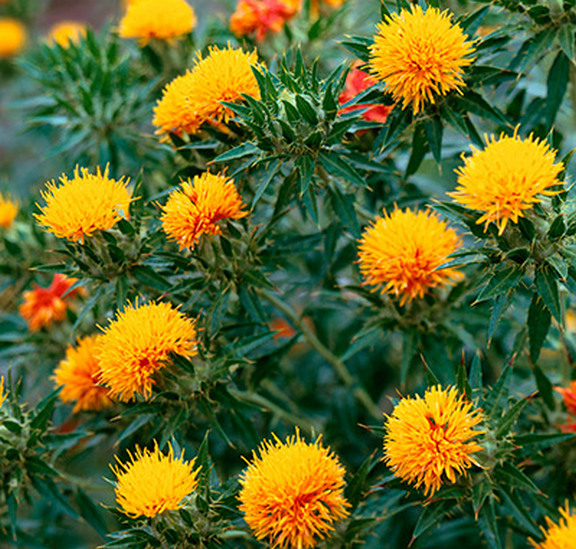The plant, which is also known as saffron (wild, American), has a unique composition. Its flowers contain a large amount of chalcone glycosides, trace elements, vitamins A, C, D, B12, B6. The dark yellow or orange flowers have a soft floral aroma and a bittersweet aftertaste.

Growing sesame seeds on arable lands in Sarakhs district of Akhal region and sesame oil production using the Cold Press method at the plant for processing vegetable oil.

1. Growing Oilseeds and Cereals
Sesame Seeds
Sesame seeds originate from the plant Sesamum Indicum L. suitable for human consumption. Natural sesame seeds contain all the natural nutrients of sesame seeds. Sesame seeds have high oil content (approx. 48% min.) and protein content (approx. 25%).
Sesame seeds have used as a spice condiment or as a garnish in many ethnic dishes and bakery items to enrich taste and nutritional values.
Sesame seeds reduces cholesterol level and prevents high blood pressure in the body

Other crops
Our company plans to implement the production of grain crops like different types of beans and oil seeds in the near future.

2. Oil pressing facility (или Edible oil production facility)
Sesame Oil
Sesame oil produced by the method called “cold pressing” conserves much of it is nutrients and therefore has a wide range of benefits and uses.
Foods
- Common cooking oil for cooking, pan-frying and deep-frying
- Cold-pressed and roasted qualities are used in Asian cuisine as a seasoning oil because has intense aroma
- Food fried in Sesame oil has long shelf life because the oil contains antioxidant called “Sesamolin”.
Cosmetics
- Utilized for body oils and as a carrier oil for active ingredients
- Introduced as a carrier oil in the fragrance industry
Pharmaceuticals
- Favoured as a solvent and carrier for active drug ingredients
- Ideal for producing oily injection solutions
- Acts as a fatty component in plasters and salves
- Sesame oil is an intermediary in the production of pharmaceutically active ingredients
- Often found in the production of nasal sprays.
Veterinary/animal nutrition/animal care
- Preferred as a beneficial ingredient in pet food
- Implemented as a carrier for active drug ingredients and care products.

3. Legumes – dicotyledonous insect pollinated plants. Five-membered type flowers, bean fruit (popularly “pod”). There are more than 18 thousand species, the most common of which are peas, beans, lentils and chickpeas.
Legumes are known for their high protein content due to nodule bacteria on their roots that fix atmospheric nitrogen. Thanks to these bacteria, the soil after legumes have considered fertile. In addition, they are a storehouse of vitamins and macronutrients, which are indispensable for our body.
About growing:
Legumes are much more unpretentious than sesame, and do not require such careful care. Preferably, the predecessors were cucumbers, cabbage or onions. The ideal time for sowing is May, preferably the second half, in order to avoid unwanted frosts. Depth of embedment is not more than 5 cm. For climbing varieties of plants, it is necessary to put sticks on the sides of the ridge and pull a string on them. The first sprouts appear on average after 10-20 days (it depends on whether you soaked the seeds before sowing).
Harvesting for each plant from this family is different. The main thing is not to delay it, since pests quickly develop on beans, and ripened fruits interfere with the appearance of new ones.


